Shakespeare concerned himself with intersection of metaphor and materiality. Also at this post: Rezoning application for 457 Richmond Street West, Toronto, now at Divisional Court
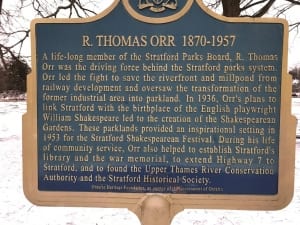
Plaque in honour of R. Thomas Orr. North of Veterans Drive a short distance west of Wellington Street North. Jaan Pill photo
Should you save a building, that is on the King-Spadina Heritage Conservation District (HCD) list of heritage properties, or should you let it go?
Preservation of Stratford park system
The answer will depend on how a decision maker (or panel of decision makers) views the rezoning application for 457 Richmond Street West, after data and narratives, for and against, have been submitted.
In this case, the decision maker will be the Ontario Divisional Court. I await the outcome, which may take some time in coming, with interest.
I am reminded, with regard to what to make of things, about the choice that residents of Stratford faced in the early 1900s.
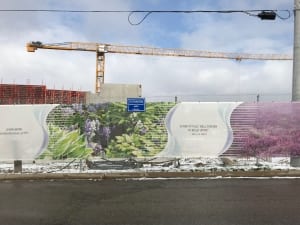
Tom Patterson Theatre Centre site, Nov. 14, 2018, view from Water Street looking north. Text reads: “A pretty plot, well chosen to build upon!” – Henry VI, Part 2.” Jaan Pill photo
At that time, many residents of Stratford favoured building of a railway line through a park system along a stretch of the Avon River which runs through the city. Many others were opposed to such a railway route.
Residents of Stratford were involved in making the choice. That fact warrants strong emphasis. It is highly inspiring and significant when residents have direct input, regarding land use decisions that directly affect them.
In the end, Stratford held a referendum. When the votes were counted, residents opposed to building of the railway through the parkland came out ahead, by a margin of 127 votes. That set the stage for many good things that have occurred in Stratford in the decades that followed. The decision made good economic sense.
The decision was in accord, that is, with standard principles of late capitalism and standard principles of what in the current era is known as neoliberalism. The key question was: How do you best frame the discussion, when such a choice (between a railway line and the preservation of a park system) needs to be made?
In 1952, the city’s park system was chosen (by Tyrone Guthrie and colleagues) as the site for construction of the Festival Theatre, where the Stratford Festival was launched in 1953.
The festival helped the city to address the postindustrial economic decline that affected many communities starting in the 1950s.
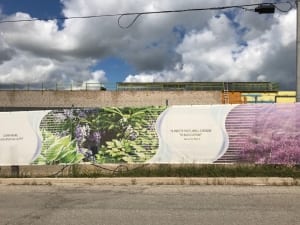
Tom Patterson Theatre Centre site, view from Water Street looking north, Sept. 7, 2019. Jaan Pill photo
The photos at the current post are from the Tom Patterson Theatre Centre construction site along the park system in Stratford.
The new venue will among other things provide a setting for events at the Meighen Forum at the Stratford Festival.
An Aug. 26, 2019 Arts Journal article by Diane Ragsdale, entitled “The Changing Face of Arts Engagement: My remarks at the Stratford Festival Forum,” offers an overview of topics at a recent such forum. If you wish to find the link, which is at an http (as contrasted to an https) site, you can do a browser search for it.
A transcript of the talk featured in the article can be accessed here:
Changing Face of Arts Engagement – Diane Ragsdale
The talk by Diane Ragsdale, which like all of Shakespeare’s work addresses the intersection between metaphor and materiality, warrants a close read.
The above-noted article and related comments share valuable reflections regarding perennial topics of interest including the demographic and (not diverse, compared to Toronto) racial profile of Stratford, the revenue model that requires high ticket prices, and the supportive economic environment (affordable housing and “universal availability of health care “) available to Stratford actors.
The above-noted transcript also speaks of the tremendous value of human connection.
An Aug. 27, 2019 CBC article, entitled “How the rise of the automated lifestyle might threaten our ability to connect,” underlines the value of such a connection. In my public school teaching career (I retired in 2006), I especially enjoyed role play and drama in the classroom.
Live drama has such a tremendously valuable role to play in life – in the case of teaching, it’s an awesome way to consolidate what students have learned in academic work.
Among my favourite authors, with regard to the role of drama in society, is Tyrone Guthrie, who served as artistic director in the early years at the Stratford Festival; among his written works are:
In Various Directions: a View of Theatre (1965)
Both books are available on loan at the Stratford Public Library.
While he was himself favourably positioned within the strongly hierarchical, strongly status-oriented British class system, Guthrie viewed the world from beyond such a class-based framework.
Educated at Oxford after entry on a history scholarship, Guthrie (1900-1971) turned to theatre after deeming other career options available to him unappealing. He turned to theatrical directing after realizing he was not made out to be an actor.
Guthrie’s early work included directing radio plays for BBC Radio, then newly launched. Long before his work in Stratford, Ontario, he also directed plays about Canadian history for a national radio service in Canada launched by the railway industry. In those days he got to know Montreal and other cities well.
A related post, focusing on history related to the Stratford Festival, is entitled:
The landing page at the Preserved Stories website offers a quick overview of the launch in 1953 of the Stratford Festival.
Legibility and nineteenth-century forestry
Rulings by land use tribunals, and other forms of land use decision making, concern themselves with legibility. When I read the above-noted Divisional Court decision, I will be much interested in how each side, for and against the rezoning application, establishes legibility on behalf of its respective point of view.
Some basic points regarding legibility, as I understand the term in relation to land use, are as follows:
- A process of simplification and rationalization enhances legibility
- To achieve simplification in the short term, you need to leave many things aside, and omit them from consideration
- Leaving things out of consideration, however, will lead to big-time problems down the road
Cadastral mapping
Beginning with the premodern era when, for example, cadastral mapping enabled nation-states to establish legibility with regard to land ownership, which hitherto had only been legible at the local level, the pursuit of legibility has become a central feature of statecraft.
In Seeing Like a State (1998): How Certain Schemes to Improve the Human Condition Have Failed, James C. Scott presents the nineteenth-century invention of single-crop forestry as a paradigm for subsequent twentieth-century applications of legibility.
In nineteenth-century forestry, instead of dealing with an old-growth forest, state officials in Prussia and elsewhere came upon a novel strategy.
In this strategy, you choose a species of tree that has promise as a revenue source, and line up such trees in rows like soldiers on parade.
Under such a forestry regime, trees are easy to count and it’s easy to establish what the expected yield of timber will be, from a crop of trees.
Such a system is eminently legible. In setting it up, the forest ecosystem typical of an old-growth forest was ignored. Ecology mattered not a whit, to nineteenth-century managed-forest practitioners.
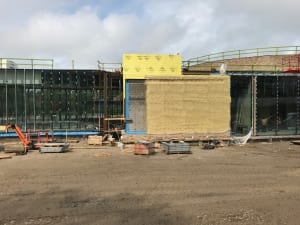
Tom Patterson Theatre Centre site, looking north from Water Street, Aug. 27, 2019. The rectangle in the foreground has at this stage not yet been covered in a layer of bricks. Jaan Pill photo
There is a problem, however, in such a system of forestry. The volumes of timber produced under monocrop conditions are prodigious in the early years. But over time, the yields drop precipitously. In the long run, trees actually grow better under conditions that prevail inside an old-growth forest.
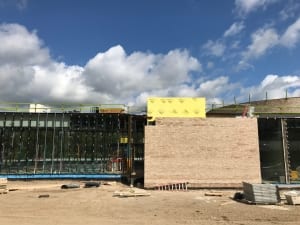
Tom Patterson Theatre Centre site, looking north from Water Street, Sept. 7, 2019. The rectangle in the foreground has now been covered in a layer of bricsk. Jaan Pill photo
Only a strong civil society can resist headstrong, blinkered state-level land use legibility projects
The history, related to subsequent twentieth-century application of such a legibility paradigm to specified (that is, particularly disastrous) land use and urban planning schemes is outlined in Seeing Like a State.
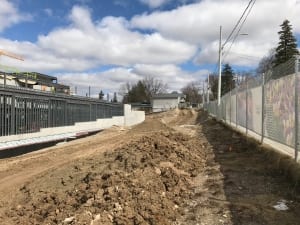
Tom Patterson Theatre Centre site, looking east along Water Street, April 10, 2019. In the background, the Stratford Optimist Hall, a white building with a gray roof is visible. Jaan Pill photo
Among those conditions has been the absence of a strong civil society; when civil society is strong, its capacity for organized resistance stands a chance of thwarting the wholesale application of state-level legibility projects, of a kind that have the capacity to result in spectacularly dismal results.
As a blurb for Seeing Like a State notes, Scott identifies and discusses four conditions common to all planning disasters:
- administrative ordering of nature and society by the state;
- a ‘high-modernist ideology’ that places confidence in the ability of science to improve every aspect of human life;
- a willingness to use authoritarian state power to effect large-scale interventions; and
- a prostrate civil society that cannot effectively resist such plans.
The process of simplification and rationalization applied to forestry was also applied to weights and measures, taxation, and factories.
As well, as Scott notes, the same principles were at play in state-level attempts to jettison all previous history – and to re-design, and re-construct, entire societies as if from scratch (p. 91):
Industrial-strength social engineering was born. While factories and forests might be planned by private entrepreneurs, the ambition of engineering whole societies was almost exclusively a project of the nation-state.
Legibility, viewed in more general terms
For the current post, my interest is in speaking of legibility in more general terms, not as seen by a state but as seen by everyday citizens, who belong to a civil society.
At this level, legibility can readily serve benign purposes, where the results of varied civic projects are a source of widespread satisfaction. Alternatively, of course, legibility can also serve malign purposes.
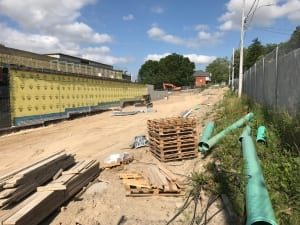
Tom Patterson Theatre Centre site, view looking east along Water Street, July 11, 2019. In the background, the Stratford Optimist Hall is no longer visible, as by this date it had been demolished. Jaan Pill photo
A Sept. of 6, 2019 Nova Res Urbis (NRU) Toronto newsletter front-page article, entitled: “Asserting heritage,” serves as a suitable case study in relation to the application of legibility, in this case in relation to:
- what heritage preservation entails
- what land use entails
- how legibility functions in the present moment
I subscribe to the NRU newsletter. Because it requires a paid subscription, I have not provided a link to the article. Reading of the newsletter requires a subscription.
Local Planning Appeal Tribunal (LPAT) decision regarding 457 Richmond Street West
The Sept. 6, 2019 NRU article notes that the city of Toronto is appealing a Local Planning Appeal Tribunal (LPAT) decision relating to whether a property at 457 Richmond Street West can be read as having heritage value.
The relevant application, aimed at demolition of the property, the article notes, was submitted a year before city council approved a Heritage Conservation District (HCD) plan. The plan includes the above-noted property in a list of HCD-related heritage properties.
The LPAT decision said the property in question does not have significant heritage value, meaning the rezoning application should be permitted.
The city of Toronto has brought the matter to Divisional Court, on four points of law.
An argument against the city’s appeal, outlined at length in the article, is that, in effect, legibility has not been established, with regard to the heritage value of properties listed under the King-Spadina Heritage Conservation District.
With regard to legibility (as I use the term), a proponent of the rezoning application is quoted as noting that because the HCD in question is not yet in force, “the nine criteria that are used to consider a property’s potential heritage value within HCDs are irrelevant.”
A city heritage expert, however, is briefly quoted as arguing that the property is part of a “distinctive streetscape” whose demolition would amount to a “complete and irrevocable loss.”
NRU article devotes more space to arguments against the city’s position
The NRU lead article regarding 457 Richmond Street West devotes significantly more space to the argument against heritage designation of the property than it does to the city’s opposing position.
The one-sided nature of the emphasis is understandable. Novae Res Urbis is a valuable newsletter to which people, such as myself, pay a subscription fee.
We live at a time when newspapers – especially ones reporting local news – are seeking a viable revenue model, to enable them to stay afloat.
In recent years, many newspapers have gone under, for want of a viable revenue model as noted at a previous post entitled:
NRU’s revenue model is based on ensuring that subscribers are pleased to continue reading. A city is a massive, living jumble of facts, impressions, people, buildings, and history, not unlike an old-growth forest, metaphorically speaking.
A publication – any publication – that seeks to maintain economic viability, in bringing Toronto-based news and opinion articles to readers must, of necessity, present texts that are readily legible, and digestible, for a particular clientele that represents a particular readership.
That being the case, it’s understandable that the Sept. 6, 2019 NRU news report gives prominence to the proponents of the above-noted zoning application. There is no reason, in the circumstances, for NRU to choose a more balanced treatment of the topic at hand. She or he who pays the piper calls the tune.
For my own part – as a person who places strong emphasis on the economic value of heritage preservation, in such cases where a building’s documented history suggests it is indeed worth preserving – I have no problem in gleaning factual information from such an article.
Given that it’s the facts that interest me, period, whether one or another side of an argument is emphasized does not matter to me.
The next topic of interest will concern how legibility is established, within the context of a provincial legal framework, when the Divisional Court makes its decision, regarding 457 Richmond Street West.
As I’ve noted previously, some of the best writing that you can read, with regard to what happens in communities, can be encountered in legal decisions and reports. Often you can read such reports at no cost at the CBC website.
Increase in Toronto rental supply
In the meantime, the Sept. 6, 2019 NRU Toronto newsletter also has some straight-news articles (wherein a requirement for selectivity, regarding which side to emphasize, does not arise) that I found of interest.
For example, an article entitled “Supply influx” highlights the increase in rental supply in the Toronto housing market.
Given my interest in legibility as an analytical tool, I was interested to note that, according to an economist featured in the article, Statistics Canada numbers suggest that Canada’s rental market is oversupplied by as much as 15 percent.
However, according to the article, the figures do not account for non-permanent residents or students: “When adjusted for those renters, the market is slightly under supply – by about five percent.”
According to the article, “that fallacy causes developers, especially internationally, to avoid building rental units in Canada.”
In terms of legibility, then, if the above-noted information is correct, StatsCan has decided that, for its own purposes, non-permanent residents and students need not be counted in calculation of rental supply. Thus it gets a clear and legible, albeit apparently misleading, reading.
The reading suits StatsCan but does not, as I understand, suit some of the key potential clients of StatsCan data.
In terms of a wider picture – again, in the event I understand this story correctly – the StatsCan version of the rental supply is off the mark, and fails to meet the practical needs of developers, especially ones outside of Canada.
Another article, entitled “Plotting waste renewal,” presents an overview of a pilot project aimed at installing a heat exchanger inside a water tank connected to a sewer line.
The heat from the sewage water, generated from bacteriological activity in the water, will be used to heat a building, thereby bypassing gas or electricity as a means of heating.
If the pilot project works, the system will become operational.
The NRU newsletter regularly features such articles.
In the early-1900s, a Stratford builder played a key role in preservation of the city’s park system
A recent post features photos of construction underway at the Tom Patterson Theatre Centre construction site in Stratford.
The current post features a few more photos from the same building site.
The Tom Patterson story – and related narratives featuring R. Thomas Orr, Tyrone Guthrie, Tanya Moiseiwitsch, and Mary Jolliffe among many others – underlines a particular approach toward legibility.
In the early 1900s, a Stratford builder, R. Thomas Orr (1870-1957), led a successful effort to keep Stratford’s park system, along the Avon River, from being destroyed through construction of a railway line along the south side of the river.
In earlier decades, he had also played a key role in the development and expansion of the same park system, and in creation of Stratford’s Shakespearean Gardens, located within parkland on the south side of the Avon River.
I would say that Orr and fellow residents read the situation at hand as follows: “There is more economic value in keeping the park system, which functions as a local heritage landscape, intact. That is preferable to destroying it, in order to depend upon a railway line to advance the economic interests of the city.”
The park system remained intact. The railway line proposal was abandoned. In 1952, a key portion of the park system became the site for construction of the Festival Theatre, and the successful launch of the Stratford Festival in the following year.
Missing minutes, Stratford parks board meetings
From what I have read of events in Stratford in the early 1950s, there has been conjecture that R.Thomas Orr may have been originally opposed to the building of the Festival Theatre, at a location near the corner of Queen Street and Ballantyne Avenue, at the edge of the park system.
Orr’s concern might have been that it would have been better to leave the parkland as it was. However, the official version of the story, as I understand it, is that in the end, Orr did support the launch of the Stratford Festival, which has brought significant economic value to the city.
Some minutes of Stratford parks board meetings, at which Orr and other residents spoke for and against the construction of the Festival Theatre within the Stratford park system, have disappeared long ago, according to what appears to be a reliable account that I have been reading.
I’ve also been reading that Orr was consistently involved, over many decades, in preservation of historical records of every description related to the European settler history of Stratford and Southwestern Ontario. Circumstantial evidence suggests that he may possibly have had a role in the disappearance of the aforementioned parks board minutes.
In the absence of evidence, no definitive statement can be made.
What is evident, however, is that local history narratives regarding R. Thomas Orr’s contributions to Stratford’s development as a heritage and cultural tourism destination are a strong source of inspiration.
Southwestern Ontario land use
Since moving to Stratford in October 2018, I’ve kept in touch with land use issues in Toronto and elsewhere.
Reading of studies such as Seeing Like a State (1998) and Community (2011), highlighted at a previous post, has helped me to learn how the concept of legibility, as a heuristic or analytical tool, can help a person better understand what land use entails.
At times I stop to marvel at the fact the Stratford Festival and the building of the Tom Patterson Theatre Centre, slated for completion in 2020, are part of an innovative and visionary project that was initiated and continues to flourish.
Preservation of built heritage, and of heritage features such as urban park systems, is not some counter-cultural, arcane endeavour.
It is, instead, a valid, economically viable project that warrants celebration and commendation, even as a strictly hard-nosed business proposition.
Much research underlines the economic value of heritage preservation, a point that is underlined in a recent Heritage Toronto overview, highlighted at a previous post entitled:
I await with interest what the outcome of the Divisional Court case involving 457 Richmond Street West will be. It will come down to which side creates the greater degree of legibility, in organizing data and narration on behalf of its respective position.
Parks and gentrification in American cities
An Oct. 10, 2019 CityLab article is entitled: “Why Greenway Parks Cause Greater Gentrification: While green spaces are often linked to gentrification, new research shows certain types and characteristics of urban parks play a much greater role than others.”
An excerpt reads:
Great parks and open spaces help to make great cities. They provide areas for recreation and burning off the stresses and strains of everyday urban life, and their tree canopy helps communities mitigate pollution. People feel more attached to their cities and their neighborhoods when they can access nature, and green space contributes to the physical beauty of their neighborhoods.
Parks are a central piece of the civic infrastructure that helps bring people and families together in large, anonymous cities. What cities need to do is ensure that their initiatives for parks and green space are fully integrated with their broader strategies for more inclusive development for all neighborhoods and residents.
Data and framing
In posting the above-noted CityLab link, I am not providing a blanket endorsement of the contents of the citylab.com website.
When I post information from the Novae Urbis Res (NRU) newsletter from time to time, I am not providing a blanket endorsement of the contents of the newsletter.
It is of interest to follow discussions, in such publications, with a data, and on how it is framed.
Each of us has a measure of freedom regarding how we evaluate data, and how we frame it.
Arts engagement and longevity
A Dec. 18, 2019 BMJ article is entitled: “The art of life and death: 14 year follow-up analyses of associations between arts engagement and mortality in the English Longitudinal Study of Ageing.”
An excerpt reads:
Receptive arts engagement could have a protective association with longevity in older adults. This association might be partly explained by differences in cognition, mental health, and physical activity among those who do and do not engage in the arts, but remains even when the model is adjusted for these factors.

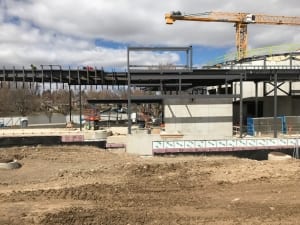
Leave a Reply
Want to join the discussion?Feel free to contribute!